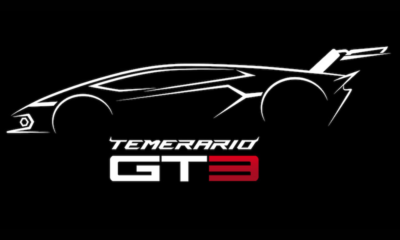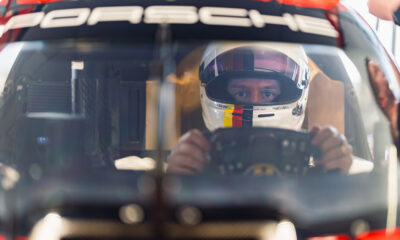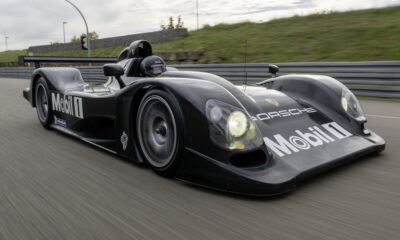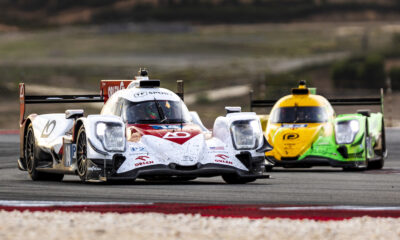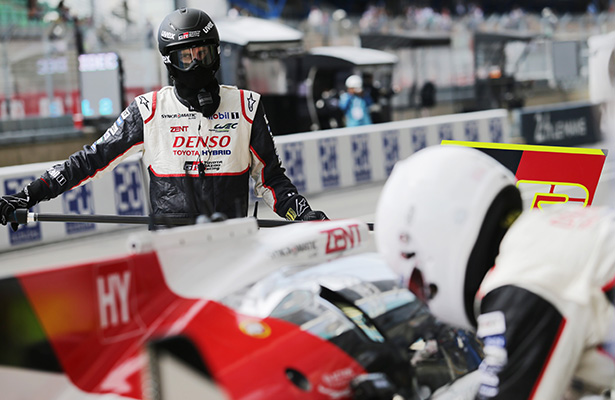
Photo: James Moy/Toyota
ACO Sporting Director Vincent Beaumesnil says they are “quite confident” teams will get “good results” on budgets in the new 2020 LMP1 regulations, despite the addition of a potentially costly new hybrid plug-in system for all-electric bursts of driving.
The FIA and ACO revealed the new regulations on Friday, which is largely focused on stability and cost-cutting measures although also introducing plans for a 1 km “electric stretch” of driving from pit-out following each pit stop in each FIA World Endurance Championship race.
Additionally, the ACO is targeting for the cars to cross the finish line fully on electric power as well.
The new measures will be made possible by a rapid-charging plug-in system during pit stops, which Beaumesnil said helps bring road relevance to the race track.
“The idea was really to keep the movement ahead of what we have in technology in motor industry, because our priority is to be connected with what we see in the cars,” Beaumesnil told Sportscar365.
“It became quite obvious. You know we had other ideas with hydrogen and things like that, but it will need more time.
“The future we have ahead of us is to have hybrid cars that help you to go in the city with electric power and then long distances with an internal combustion engine, so it was making sense.
“And for us, we wanted to really do it with our special character, which is having a load [charged] in the pit stop, so it’s completely different of any kind of electric racing that we have to, and keeping the performance very high, to see that with electric power we want to keep the cars very competitive.”
Beaumesnil said the 1 km target has been determined based on what they know can be currently achieved with battery technology and stressed they must be faster than LMP2 cars in full electric mode.
“The target is to bring them as close as possible to what they can do with the internal combustion engine, and that is the challenge,” he said.
“There will be specific development for the quick load, but we are also looking ways to make the system you use to plug in not going in crazy investment.
“I cannot say now but we will evaluate different options to make it something affordable and not too difficult to use.”
While the hybrid technical regulations remain largely unchanged, in continuing with a maximum of two energy recovery systems and allowance in up to a 8MJ subclass, Beaumesnil said it’s currently difficult to say whether other cost-cutting measures will lead to an overall reduction in budget for LMP1 manufacturers.
“You have different manufacturers with different budgets, and they have different costs. It’s impossible to give an answer,” he said.
“We did not want to lose what is our DNA. It’s a top championship with high technology and road relevant technology we test from the cars.
“That’s why we wanted to bring something new.
“In parallel, we have been quite aggressive on aerodynamics, wind tunnel, number of bodyworks, team personnel. We have other things.”
A reduction from two to only one aero kit is among the other major change for 2020, which will see the introduction of variable aero at the rear wing and splitter, which will be movable.
Developments, meanwhile, will be regulated through homologation periods, preventing teams to come out with all-new cars each year, with other cost-cutting measures including a further reduction in private testing, wind tunnel time and crew limitations.
The regulations will be locked in for a four-year period, adding further stability for manufacturers.
“We know that developing something electric will require some investment,” Beaumesnil said. “It’s normal with technology, and it makes part of the game.
“But we are having very good results on other parts. We want to remove freedom in things that are not road relevant.
“The aerodynamics under the car is clearly something which can give you big results, but it has nothing to do with the road cars. The fans don’t see it. It’s just a secret thing that nobody knows.
“And we feel that we would prefer manufacturers to spend money on something that is road relevant and things that the fans can see from the outside. That was the philosophy.”
Beaumesnil said he hopes the new regulations will bring in additional manufacturers into the top prototype class, despite questions looming over the future of Porsche and no news on Peugeot’s potential arrival.
“From what I see and know, this is raising a lot of interest, because this really corresponds to the product which is developed on a large scale worldwide today,” he said.
“I’m not the man who decides, but for sure it’s also for us very important to make LMP1 accessible to new entrants. This is why also we have restricted some aero things to help also new entrants to be competitive earlier.
“All of this is part of the package. So yes, I think we are attractive, I really think.”




















